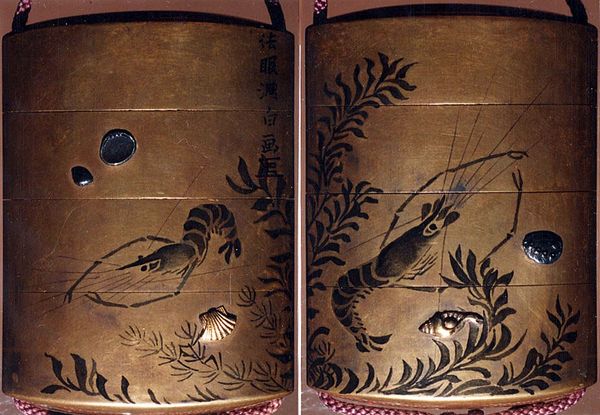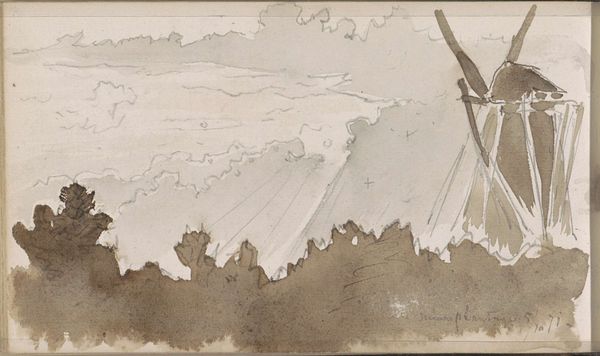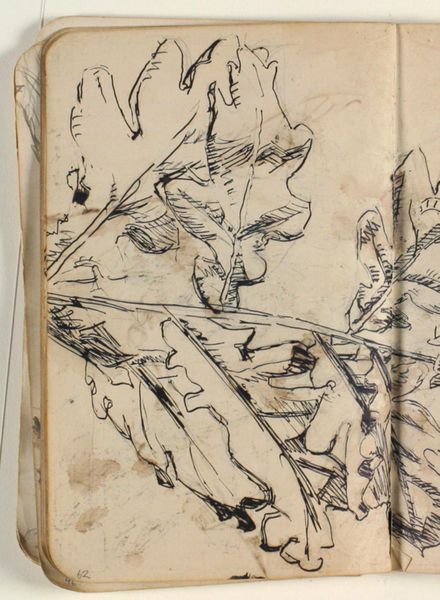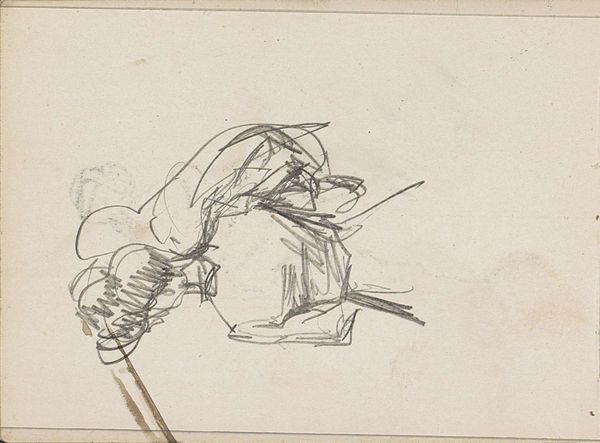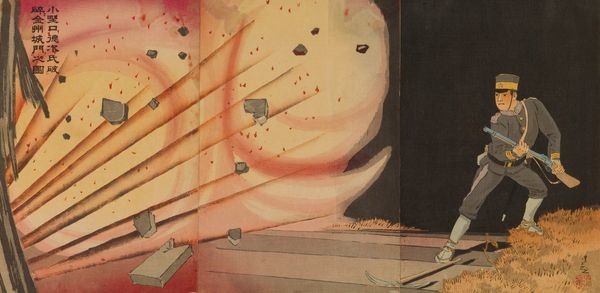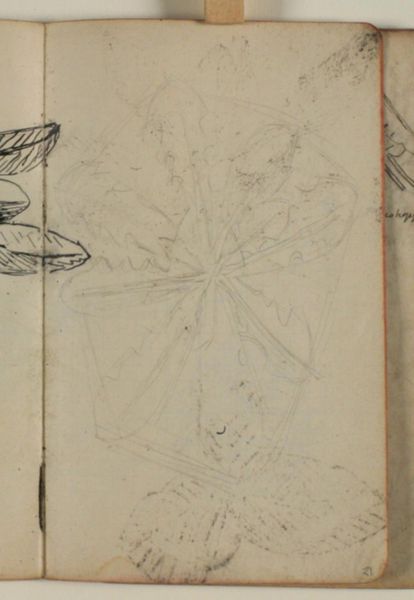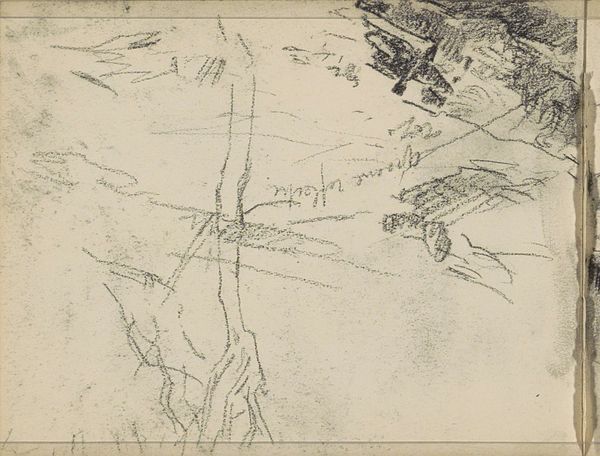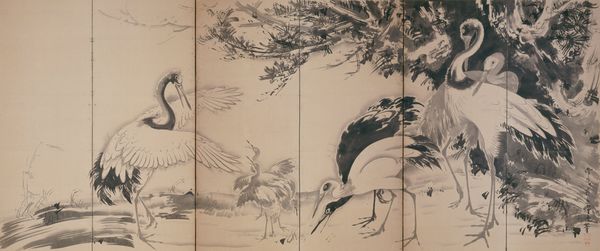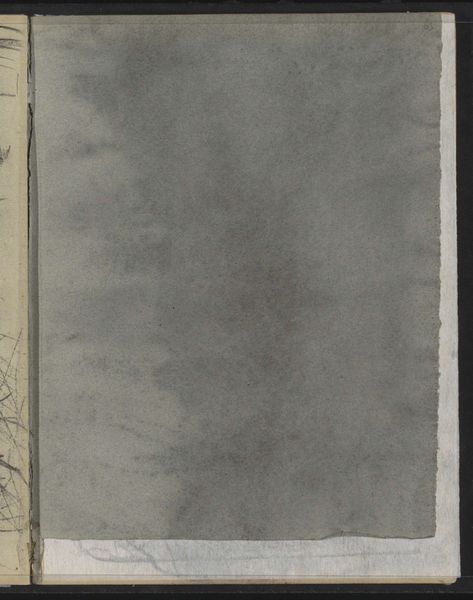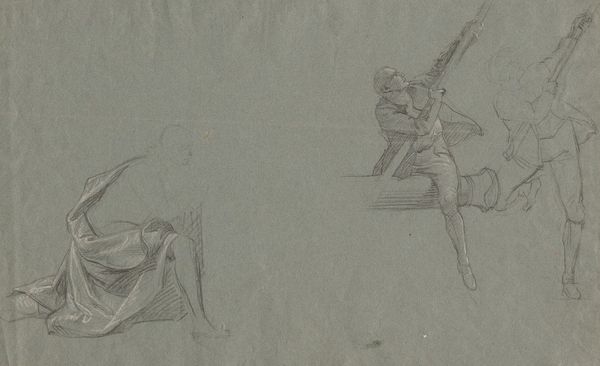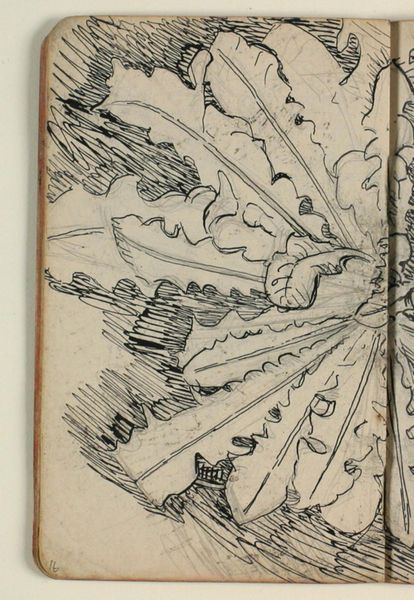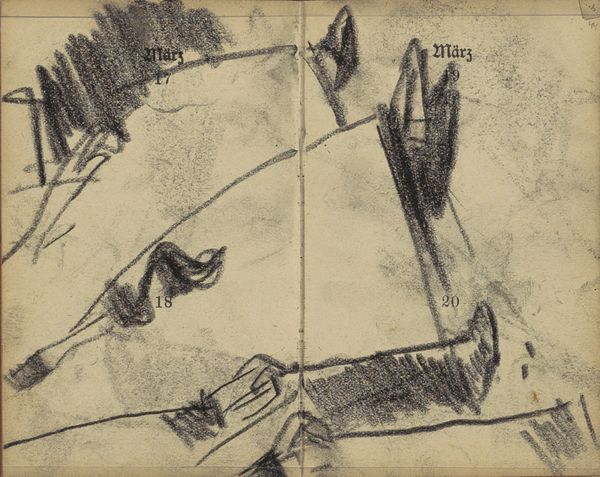
drawing, ink
#
drawing
#
asian-art
#
landscape
#
figuration
#
ink
#
decorative-art
Dimensions: 3 5/16 x 2 3/16 x 3/4 in. (8.4 x 5.5 x 1.9 cm)
Copyright: Public Domain
This is an Inrō with Gibbons in a Landscape, made by Kano Sukekiyo in Japan, sometime between the late 18th and early 19th century. An Inrō is a traditional Japanese case for holding small objects, often made using the lacquering technique. Lacquer is a complex material derived from tree sap, applied in thin layers and then polished. The decoration is applied in a slow, painstaking process. The shiny, lustrous surface we see here results from many hours of skilled labor, transforming a humble material into a luxurious object. The depiction of gibbons in a landscape further enhances its value and cultural significance. In Japanese art, gibbons are symbols of intelligence and familial devotion. The meticulous craftsmanship and symbolic imagery of the Inrō elevate it beyond a mere functional object to a work of art. This piece reminds us that even everyday items can become powerful expressions of skill, culture, and meaning.
Comments
No comments
Be the first to comment and join the conversation on the ultimate creative platform.
